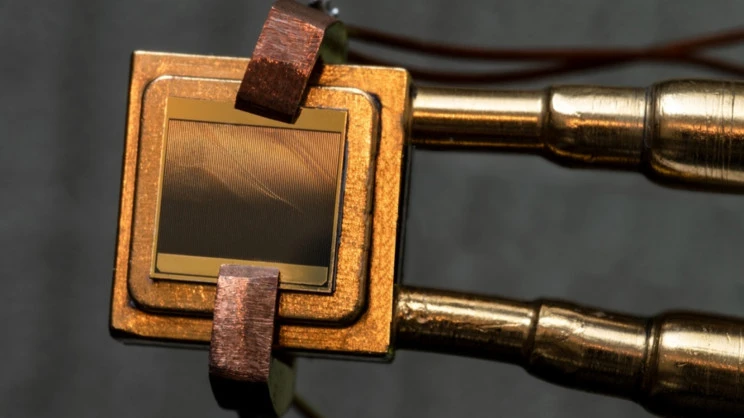
Researchers at the Massachusetts Institute of Technology (MIT) and the National Energy Laboratory (NREL) have introduced a new heat engine without any moving parts. The device is about 40% efficient, suggesting it may one day take the place of conventional steam turbines. The results were recently published in the journal Nature.
Using The Heat Engine To Generate Electricity
The new heat engine is knowns as a thermophotovoltaic (TPV) cell and shares a few common characteristics with traditional photovoltaic cells. However, it can capture high-energy photons from a white-hot source to generate electricity. This new heat engine can generate power from temperatures between 3,400 and 4,300 degrees Fahrenheit (1,900 – 2,400 degrees Celsius).
As it stands, the team has successfully shown the basic elements of such a system, but on a small scale. The next step is attempting to combine all the components to build a genuine demonstration testbed. They will start by creating a simple proof-of-concept project to demonstrate the potential of the technology. From there, the plan is to scale up their efforts with the ultimate goal of replacing fossil-fuel-driven power plants.
Recommended: Using A Railgun As An Alternative Approach To Developing Nuclear Fusion
A Revolution For The Energy Sector
Most of the current global energy production comes from sources like coal, natural gas, and some large-scale renewable resources like nuclear and concentrated solar power. The most important technology behind these methods is steam turbines, which are still the standard practice for converting heat into electricity. While it’s been the go-to method, this technology hasn’t changed much in the last century and isn’t actually that efficient.
Steam turbines can typically convert approximately 35% of the energy supplied by their heat source into useful electricity, with efficiencies as high as 60%. Although not a bad result, steam turbines have one major weakness – they need a lot of moving parts that can break down over time. It’s also important that the parts are heat-resistant and durable as they eventually wear out from normal use.
Related: How A New Hydrogen System Captures 99% of CO2 From The Air
How The Heat Engine Can Change The Energy Industry Forever
To counter these weaknesses, some researchers, like the creators of the new thermophotovoltaic engine, have experimented with solid-state replacements for traditional steam engines. A major advantage of solid-state energy converters is that they can operate at higher temperatures with lower maintenance costs since there are no moving parts. They simply sit there and generate electricity more efficiently.
Thermophotovoltaic (TPV) cells may be the solution as they could also be made from semiconducting materials with a bandgap. This is the gap between a material’s valence band and its conduction band. As such, if the material absorbs a photon with enough energy, it can send an electron across the bandgap allowing it to conduct and generate electricity.
The development of this technology has a substantial potential benefit to help reduce the global reliance on fossil fuels and, as a result, the pollution that comes with them.
Future Applications Of The Heat Engine
The future usage of the heat engine is to integrate the cells into a grid-scale thermal battery that can absorb excessive heat energy from sources like the Sun and store it in highly insulated banks of hot graphite.
When the energy is required, TPV cells can convert heat into electricity and send it to the grid. This will help fill the gaps in supply created by renewables when they are unable to meet the demand.
According to Asegun Henry, the Robert N. Noyce Career Development Professor in MIT’s Department of Mechanical Engineering: “Thermophotovoltaic cells were the last key step toward demonstrating that thermal batteries are a viable concept. This is an absolutely critical step on the path to proliferate renewable energy and get to a fully decarbonized grid.”
Conclusion
The heat engine technology is tremendous potential in terms of sustainability. Not only is it safe and environmentally benign in its life cycle, but it can also have a massive impact on reducing carbon emissions from electricity production.
These cells can be integrated into a thermal energy grid storage system to allow for dispatchable renewable energy. This allows thermal energy grid storage to achieve sufficient efficiency and cost-effectiveness to enable the decarbonisation of the electricity system.
If you’re anything like us and love following new innovations, stay updated by reading our blogs. You can also join some interesting conversations by following us on social media using the hashtag #PRVtech.


 Mail:
Mail: 



